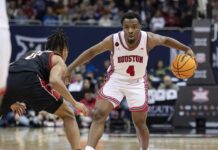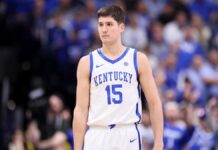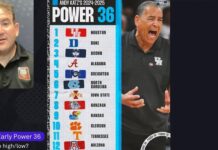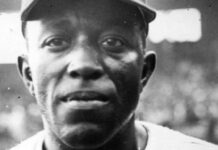When it comes to the first two rounds, the fantasy football world heavily debates the merits of drafting the best overall player versus tackling specific positions, as well as where in the draft order we’d most like to be. All too often, we ignore such strategic questions as the importance of targeting statistical ceiling versus floor with your first two draft picks.
As with either of the former debates, there is no “one size fits all” answer to this question, for a number of reasons:
-
League size (as in whether a league has our standard of 10 teams, fewer or greater) has a noticeable influence on early-round draft strategy.
-
Positions used: ESPN’s standard format uses two starting wide receivers, but many other sites use three. Leagues have increasingly been adding additional flex spots and/or the superflex or shifting to the 2-QB format. All of these influence our decision-making.
-
The poor return on investment by some notable players selected recently in the first two rounds, especially in 2020-21.
Let’s first dig into that last one, because the past two seasons have proved especially brutal as far as return on investment. That’s due in large part to Christian McCaffrey having been the No. 1 pick (on average) entering both of those years, only to miss 13 and 10 games respectively. He was hardly alone, however, as the players selected second through sixth (again, on average) in 2020 combined for 27 games missed, while those picked second through sixth in 2021 missed a total of 23 contests. Saquon Barkley (18 games missed) was another significant bust selected during that range in both years.
One thing fantasy football managers should never do is draw current-year strategic conclusions merely off last year’s draft data. McCaffrey’s example is as strong as any — one who fits either side of this column’s debate in those two years, entering 2020 as the game’s surest thing (highest floor), but beginning 2021 as its greatest risk/reward pick (highest ceiling). In either year, he went bust, but only in the latter year could you react with an “I told you so.” In the former, it should only be chalked up as bad luck.
In that case, which is the right approach?
Taking the past 10 seasons’ worth of both ADP and seasonal PPR fantasy point totals, what still stands out is how frequently those first five picks overall let you down. Combined, ADP selections one through five missed a combined 203 games, eight of them appearing in five or fewer games in the season in question, with an additional three playing in 15-plus contests but delivering lackluster (to say the least) production. We’re talking the likes of Ray Rice (2013), Eddie Lacy (2015) and Todd Gurley II (2016).
You’d have to go all the way to ADP picks Nos. 71-75 overall (220 total missed games, 10 players appearing in five games or fewer) before you’d find a five-pick span that missed as much action, from 2012-21, as the first five picks in terms of ADP did. That, again, is largely due to bad luck, but it also underscores the danger of overestimating the contribution that the RB position might provide, especially those players expected to carry the rock 20-plus times a game, week in and week out. Bear in mind that 38 of those 50 overall top-five picks were running backs. The wear and tear absorbed by running backs as a whole probably lowers their statistical floor, perhaps by more than we’re willing to recognize.
Using VBD data (which calculates a player’s seasonal PPR fantasy point total relative to a replacement-level player just outside of a fantasy lineup, so comparing it to the 11th-best quarterback, the 26th-best running back, etc.) to more fairly compare positional totals to one another, the chart below shows how the average player by ADP spot performed over those 10 seasons. These should be baseline minimums for what to demand from your own draft picks entering 2022. To illustrate what the VBD numbers mean in terms of raw PPR point totals, a 68.7-point No. 1 overall pick (that spot’s 2012-21 average, as indicated by the chart) would be the equivalent of a 227.7 point running back, a 266.3-point wide receiver or a 346.2-point quarterback.
The smoothed line raises an interesting point, at least as far as ESPN standard leagues go. With so little variation in the VBD numbers among the first 12 picks on average, drafting based upon a player’s statistical ceiling in the first round actually does make some sense — at least in leagues that are 10 teams or smaller (where there’s a good share of talent left on free-agent lists following the draft) or for so long as the projected top tier of fantasy talent has faced such difficulty staying on the field and/or we’re all as mediocre at selecting first-round talent as we have been during the past decade.
The 2022 fantasy draft board gives credence to that strategy, considering the Nos. 4 (McCaffrey) and 5 (Derrick Henry) picks on average in ESPN leagues missed a combined 19 games in 2021. (In NFFC leagues, McCaffrey’s ADP was 3 and Henry’s was 8.) If we’re facing a heightened likelihood of many first-rounders missing a good chunk of games in 2022, then aiming for statistical ceilings becomes a more logical approach, because your competition will have a similar risk of their picks going bust.
However, here’s what else stood out from the VBD research: Wide receivers, among those selected in the draft’s first two rounds, provided easily the best returns on investment, strengthening the “go for the highest floor” argument in those early stages. Wide receivers, after all, tend to have less statistical volatility, year over year, as a position more targeted generally than tight end, as well as a position whose best point-generating category (receptions) is much easier to project than, say, touchdowns.
From 2012-21, 52% of the wide receivers who were selected among the first 20 picks delivered at least 40 more points than the VBD totals in the chart, compared to only 34% of running backs who did so. These wide receivers also had only a 22% “bust” rate (40 points or more beneath VBD), compared to 35% from the running backs.
This means that the running backs you selected in those rounds needed to approach their statistical ceilings — meaning they needed to deliver outstanding point totals to have truly earned the nod ahead of those top-ranked wide receivers. Sure, maybe not to quite the levels we saw from McCaffrey in 2019, David Johnson in 2016, Gurley in 2017 or Jonathan Taylor last year, but not far beneath that. It’s not a perfect parallel to say that running backs represent “drafting ceiling” or that wide receivers are “drafting floor,” as selections like Odell Beckham Jr. (2017), Michael Thomas (2020) and Jordy Nelson (2017) had disastrous seasons from within that ADP range, but there’s a definite correlation between building around wide receivers and having a team that has a sound return on investment.
That doesn’t mean you should pass up on Taylor if you draw the No. 1 pick. While McCaffrey’s 2020 example might present a somewhat scary parallel — Taylor is entering this year as the highest-floor running back, just as McCaffrey did then — Taylor’s high return-on-investment prospects are what propel him into that consensus No. 1 spot. Some running backs do meet the high-floor standard, a group that beyond Taylor also includes Austin Ekeler and Najee Harris. It’s a few picks after that, when fellow “safe” wide receivers Cooper Kupp. Justin Jefferson and Ja’Marr Chase are also off the board, that this debate rings more loudly.
Besides knowing your league’s own draft tendencies, my recommendation is to take a twofold approach to your first two picks. If you went high-ceiling pick in the first round, strongly consider high-floor in the second, and if you can make them running back/wide receiver (in either order), all the better.
If you must, take high floor with your two picks over high ceiling with both. After all, advancing to the fantasy football playoffs is the most important goal, rather than dominating your regular-season standings. Just get in, because if you’ve played this game for any length of time, surely you know that anything can happen in the fantasy playoffs.










































